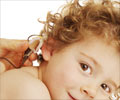
‘Technology has allowed researchers to switch from 2-D technology to the Opti-Speech technology, which shows 3-D images of tongue movements. Watching these 3-D images can help individuals learn speech sounds.’
Tweet it Now
Katz, who teaches in the UT Dallas School of Behavioral and Brain Sciences, said, "These results show that individuals can be taught consonant sounds in part by watching 3-D tongue images. But we also are seeking to use visual feedback to get at the underlying nature of apraxia and other related disorders." The study, which appears in Frontiers in Human Neuroscience, was small but showed that participants became more accurate in learning new sounds when they were exposed to visual feedback training.
Katz is one of the first researchers to suggest that the visual feedback on tongue movements could help stroke patients recover speech.
Katz said,"People with apraxia of speech can have trouble with this process. They typically know what they want to say but have difficulty getting their speech plans to the muscle system, causing sounds to come out wrong. My original inspiration was to show patients their tongues, which would clearly show where sounds should and should not be articulated."
Technology recently allowed researchers to switch from 2-D technology to the Opti-Speech technology, which shows the 3-D images of the tongue. A previous UT Dallas research project determined that the Opti-Speech visual feedback system can reliably provide real-time feedback for speech learning.
Advertisement
Katz said, "People will instantaneously shift away from the direction that the sound has pushed them. Then, if the shift is turned off, they'll overshoot. In our paradigm, we were able to visually shift people. Their tongues were making one sound but, little by little, we start shifting it. People changed their sounds to match the tongue image. The research results highlight the importance of body visualization as part of rehabilitation therapy, saying there is much more work to be done."
Advertisement
Source-Eurekalert












